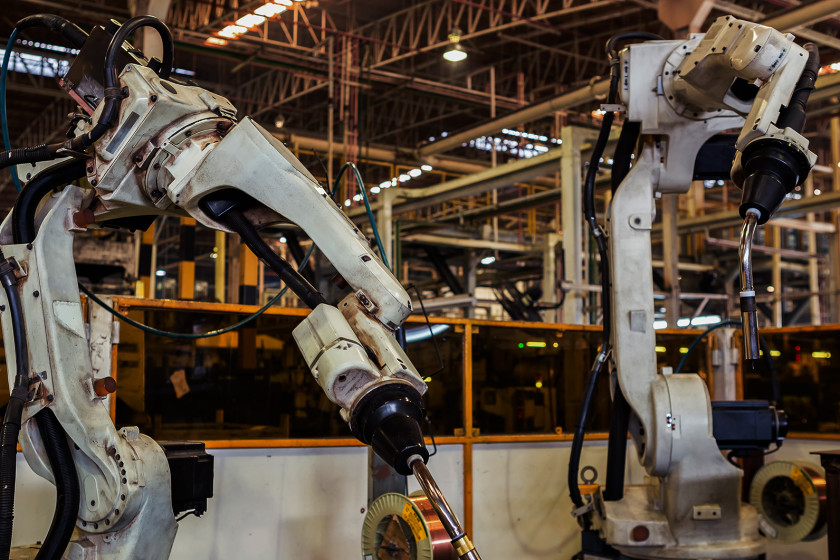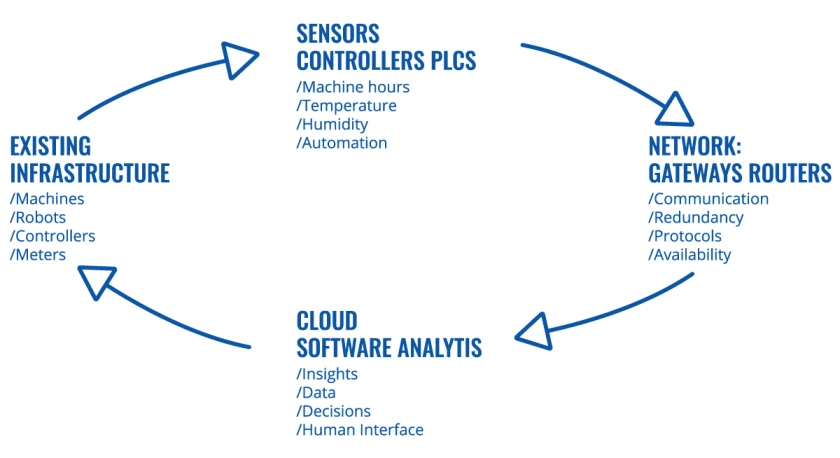THE IMPACT OF THE IIoT ON THE GLOBAL CONNECTIVITY MARKET
#iiot, #automation
Nowadays, the term Industrial Internet of Things has become a synonym of not only manufacturing process modernization but also efficiency & control in every aspect of industry digitization. With thousands of articles written on the topic, an infinite amount of information available online we look to break up this term to better understand what is IIoT precisely and what it can do for the businesses of Teltonika Networks partners.

Let us begin by stating, that IIoT refers to a subcategory of the broader Internet of Things (IoT). Regardless of an industry, you are in, IIoT has the same definition – it is a network of intelligent devices, computers, and objects that collect, communicate, and share vast amounts of data. Such data is sent and processed in central cloud-based systems and translated into an understandable human interface for monitoring and control. This is also often referred to as Industry 4.0 because the 4th Industrial revolution is defined by providing information transparency amongst different stakeholders along with interconnection between machines, sensors, and people.
MAIN BENEFITS OF IIoT
Without a doubt, increased productivity is a common goal across all horizontal markets where IIoT concepts are applied. However, we must look into more depth to understand the actual value of improved connectivity, efficiency, scalability, time savings, and cost savings for industrial organizations who engage in implementing concepts of IIoT. Connecting machines and devices with robust cloud analytics platforms offer unmatched transparency for operators and decision-makers across the organization. This allows them to make better decisions from multiple perspectives: technical support and procurement teams get early predictive maintenance notifications to ensure machine productivity remains unaffected by replacing parts and ordering new components on time. Stakeholders responsible for productivity can monitor the efficiency of the operations live – allowing them to react to any arising problems instead of looking for reasons for low performance after the fact. In turn, business owners and boards of directors can make informed decisions and act instantly upon live productivity metrics available and closely track KPIs such as ROE1 & OEE2 thanks to the data provided by the connected machine system.

MAIN TECHNOLOGIES ENABLING IIoT
We can distinguish primary technology areas crucial for the emergence of IIoT: the sensors, the network, and the analytics. The latest technology advancements in hardware development and manufacturing have made sensor technology more affordable and applicable to a broader range of industry challenges. Moreover, the availability of cost-effective communication technologies, such as Bluetooth and Wi-Fi, has made sensor communication dependable and easy to scale.
However, the biggest challenge is to connect the legacy infrastructure to state-of-the art sensor technology, advanced automation controllers, PLCs and to ensure secure and reliable two-way communication with IIoT analytics platforms. This requires connectivity technologies and hardware which offer high degree of availability, cost-efficient and easy to scale. Global expansion of 4G LTE and its LPWAN subcategories, such as NB-IoT and LTE Cat 1 satisfies all requirements on the communication technology part, but in order for IIoT deployments to be dependable – connectivity devices used are equally important. Eventually, if all parts of IIoT deployment are done correctly, but the connectivity between infrastructure and the IIoT platform fails – the whole solution becomes pointless. Secure, reliable and easy to use connectivity equipment have been the focus of Teltonika Networks product development for more than a decade. During this time we have produced almost a million of routers and gateways providing connectivity in even the most complex IIoT projects within Industry and Energy markets, you can see full portfolio here.
Overall, faster worldwide network and technology advancements in computation infrastructure gave birth to sophisticated customizable cloud platforms for human interface applications and Artificial Intelligence & Big Data analytics. IIoT deployments generate large amounts of data that needs to be interpreted. The value of analytics platforms is two-fold; they can serve self-sustaining functions when the software controls infrastructure according to preset criteria without any human interaction or they simply provide insights for users and administrators to make changes on the go according to available data metrics.
Finally, one of the main challenges for the global adoption of IIoT was protocol compatibility. Historically, different manufacturers of devices have implemented different protocols to send and receive data between devices. This created substantial compatibility issues slowing down the adoption of connected machines & infrastructure. Nowadays, regardless of numerous different communication protocols available, industry-leading companies move towards Message Queueing Telemetry Transport (MQTT) as it is quickly emerging as the standard for IIoT due to its bidirectional capabilities, lightweight overhead & publish/subscribe model. MQTT is also fully supported by the cellular and enterprise equipment by Teltonika Networks.
MAIN CHALLENGES
Even though spending on Industrial Internet of Things reached $646 billion in 2018 according to IDC analysts, the industry is still facing some challenges that need to be solved for IIoT to reach its full potential.
Without a doubt, uninterrupted connectivity is a must for any IIoT solution. Unfortunately, regardless of increasing network speeds, new technologies, and advanced Internet infrastructure, ensuring 100% Internet availability is still very challenging. Because of this, the importance of LTE solutions with Dual SIM functionality is increasing as even the best wired Internet infrastructure needs an option for connection redundancy. Teltonika Networks recognize this and offer a complete portfolio of LTE-enabled routers and gateways.
The real ROI value of IIoT project can be achieved through action made using the insights provided by the analytics platform processing the raw data into consistent feedback. IIoT cloud platforms must be robust and highly functional with the ability to scale and adapt to changing amounts of data and variables that stakeholders are interested in. On the network side, device management platforms are also essential to keep tabs on connectivity state and make sure everything is running smoothly. You can check out our Remote Management System, which is designed to keep system operators in control of their network infrastructure with minimal time investment needed.
Finally, data is the new oil, and we can see analogies between the two, not only in terms of value but also in terms of its attractiveness for theft and interception. According to numerous security experts, cybercrimes in 2018 have generated upwards of 1.5 trillion USD. Cybersecurity threats will inevitably become more relevant and dangerous as the number of connected IIoT devices increases. You can read more of our thoughts on this topic here.
FUTURE OF IIoT
Even today, the market for Industrial Internet of things is highly lucrative and competitive. Hundreds of businesses around the world are investing in development of sensors, network devices, and sophisticated IIoT platforms. According to IDC analysts – manufacturing market segment alone will spend more than $197 billion on IIoT projects, transport and utility companies are forecasted to add additional $132 billion. Future of Industrial Internet of Things is bright and exciting. However, collectively we must innovate and work towards better integration and resistance to cyber security threats. Teltonika Networks makes devices to overcome connectivity challenges of even the most complex IIoT projects. You can check our portfolio here.
1 - Return on Investment
2 - Overall Equipment Effectiveness


